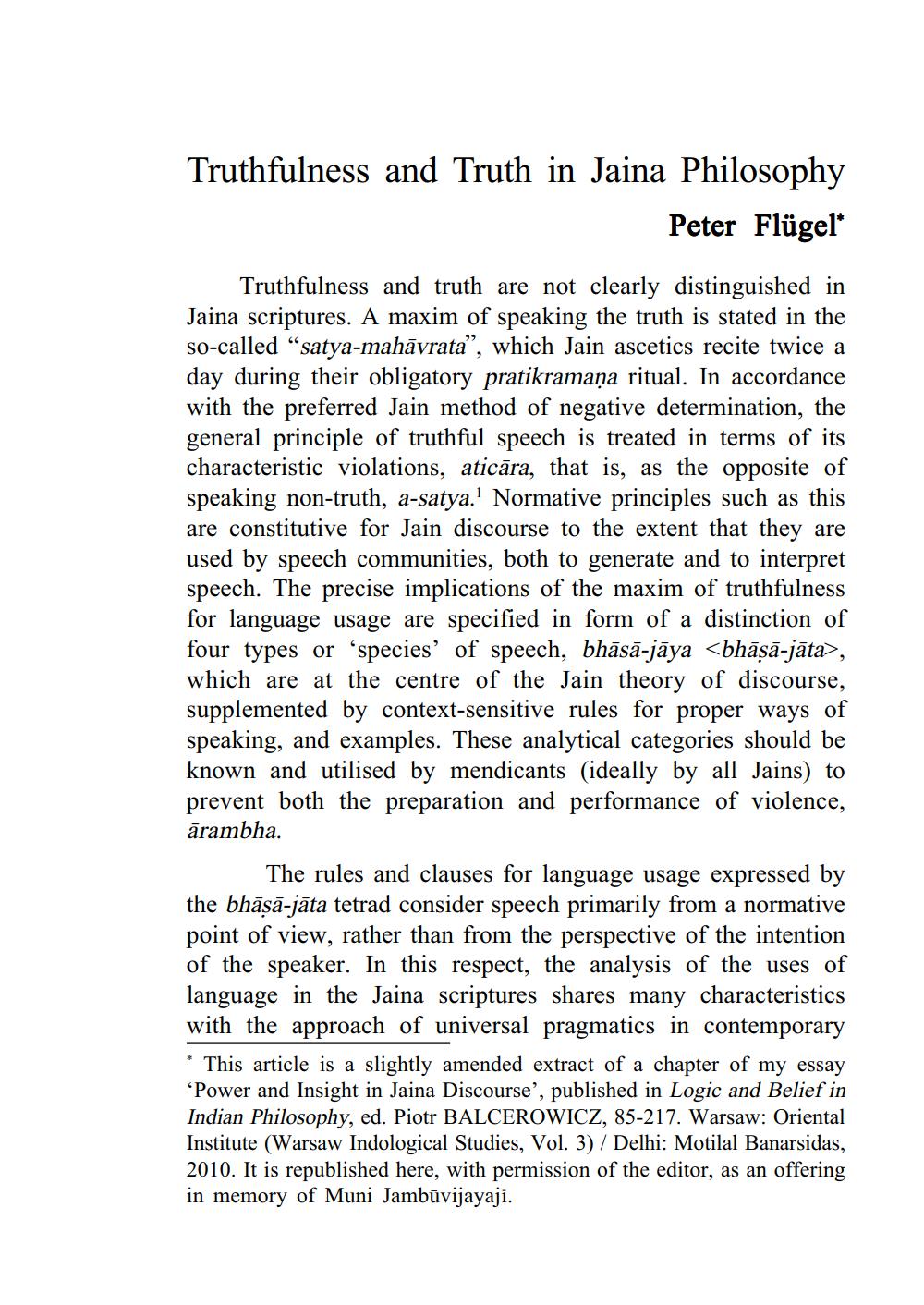________________
Truthfulness and Truth in Jaina Philosophy
Peter Flügel*
Truthfulness and truth are not clearly distinguished in Jaina scriptures. A maxim of speaking the truth is stated in the so-called “satya-mahāvrata”, which Jain ascetics recite twice a day during their obligatory pratikramaņa ritual. In accordance with the preferred Jain method of negative determination, the general principle of truthful speech is treated in terms of its characteristic violations, aticāra, that is, as the opposite of speaking non-truth, a-satya.' Normative principles such as this are constitutive for Jain discourse to the extent that they are used by speech communities, both to generate and to interpret speech. The precise implications of the maxim of truthfulness for language usage are specified in form of a distinction of four types or ‘species of speech, bhāsā-jāya <bhāṣā-jāta>, which are at the centre of the Jain theory of discourse, supplemented by context-sensitive rules for proper ways of speaking, and examples. These analytical categories should be known and utilised by mendicants (ideally by all Jains) to prevent both the preparation and performance of violence, ārambha.
The rules and clauses for language usage expressed by the bhāsā-jāta tetrad consider speech primarily from a normative point of view, rather than from the perspective of the intention of the speaker. In this respect, the analysis of the uses of language in the Jaina scriptures shares many characteristics with the approach of universal pragmatics in contemporary * This article is a slightly amended extract of a chapter of my essay 'Power and Insight in Jaina Discourse', published in Logic and Belief in Indian Philosophy, ed. Piotr BALCEROWICZ, 85-217. Warsaw: Oriental Institute (Warsaw Indological Studies, Vol. 3) / Delhi: Motilal Banarsidas, 2010. It is republished here, with permission of the editor, as an offering in memory of Muni Jambūvijayaji.




